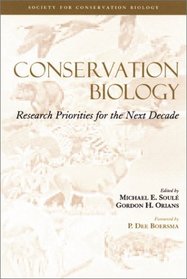Search -
Conservation Biology: Research Priorities for the Next Decade
Conservation Biology Research Priorities for the Next Decade
One of the fastest growing scientific disciplines in recent history is conservation biology. A response of the scientific community to the massive environmental changes taking place on Earth, its goal is to enable society to anticipate, prevent, and reduce ecological damage, and to generate the scientific information from which effective conserv... more »
One of the fastest growing scientific disciplines in recent history is conservation biology. A response of the scientific community to the massive environmental changes taking place on Earth, its goal is to enable society to anticipate, prevent, and reduce ecological damage, and to generate the scientific information from which effective conserv... more »
ISBN-13: 9781559638692
ISBN-10: 1559638699
Publication Date: 7/1/2001
Pages: 307
Rating: ?
ISBN-10: 1559638699
Publication Date: 7/1/2001
Pages: 307
Rating: ?
0 stars, based on 0 rating
Genres:
- Science & Math >> Biological Sciences >> Ecology
- Science & Math >> Earth Sciences >> Environmental Science
- Science & Math >> Education >> Research
- Science & Math >> Experiments, Instruments & Measurement >> Methodology & Statistics
- Engineering & Transportation >> Professional Science >> Biological Sciences >> Ecology
- Engineering & Transportation >> Professional Science >> Earth Sciences >> Environmental Science
- Outdoors & Nature >> Environment >> Conservation
- Outdoors & Nature >> Environment >> Ecology
- Outdoors & Nature >> Conservation >> General





